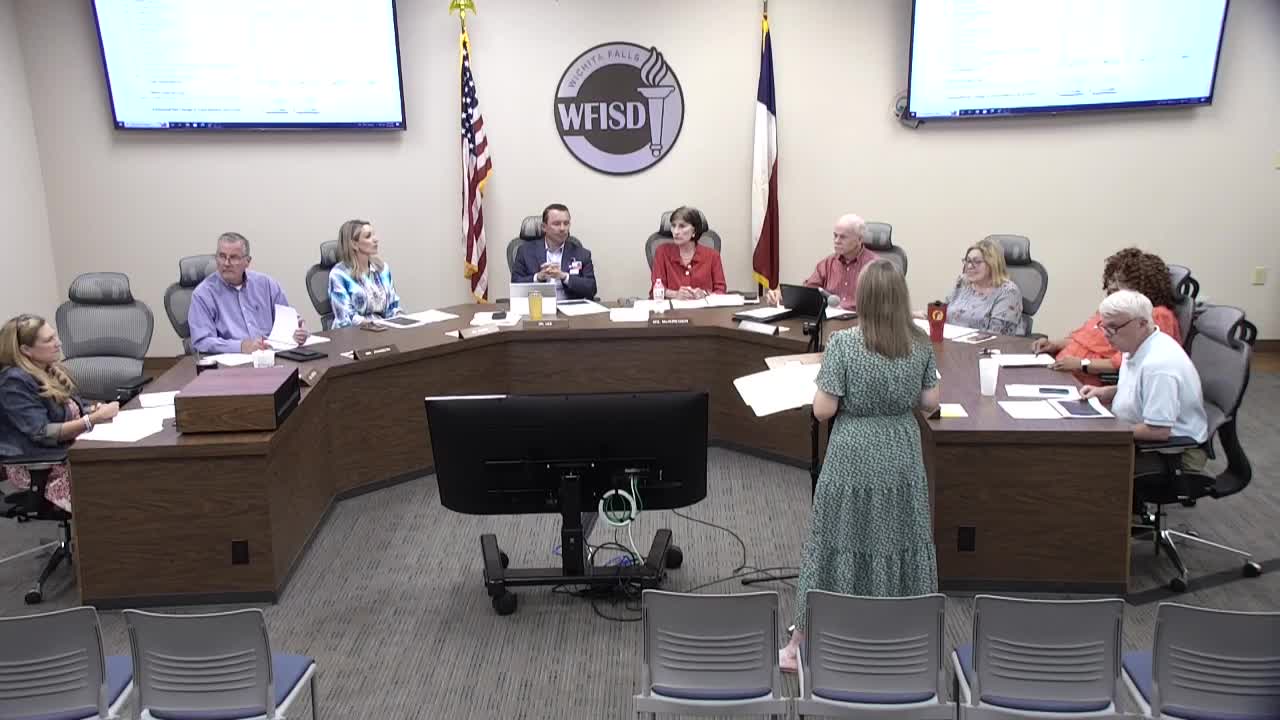School district proposes significant salary increases for teachers
June 17, 2024 | WICHITA FALLS ISD, School Districts, Texas

This article was created by AI summarizing key points discussed. AI makes mistakes, so for full details and context, please refer to the video of the full meeting. Please report any errors so we can fix them. Report an error »

In a recent government meeting, significant discussions centered around budget allocations, staff salaries, and recruitment strategies for the upcoming school year. The meeting highlighted the pressing need to address staffing shortages and the rising costs of insurance, which have reportedly doubled from $1.1 million to $2.2 million.
Chief Smith provided updates on police force vacancies, indicating that approximately ten positions remain unfilled. The budget also includes provisions for contracted services related to grounds maintenance, with plans to finalize these arrangements soon.
A major focus of the meeting was on staff compensation. The administration proposed a return to pre-reduction in force (RIF) salary structures, which would separate salary scales for different experience levels. This change aims to provide teachers with a step increase and an additional $1,000 across the board, effectively translating to a 3% to 6% salary increase depending on tenure. For instance, a teacher moving from year 0 to year 1 would see a $1,500 increase, while those with longer service could see increases of around $3,000.
Additionally, the meeting addressed the need for competitive pay to attract and retain qualified educators. New salary schedules for specialized roles, such as speech therapists and school psychologists, were introduced to reduce reliance on contracted services. The administration also proposed a 50-cent increase per step for clerical and paraprofessional staff, along with a 2% increase for all current employees.
The discussion also touched on future educators, with a proposed $5 daily increase for substitute teachers, aimed at incentivizing them to transition into full-time roles. This strategy is designed to mitigate potential staffing crises by ensuring that substitutes are adequately compensated while they work towards certification.
Overall, the meeting underscored the administration's commitment to enhancing staff salaries and addressing recruitment challenges, while also managing the financial implications of rising insurance costs. The proposed changes reflect a strategic approach to building a more stable and effective educational workforce.
Chief Smith provided updates on police force vacancies, indicating that approximately ten positions remain unfilled. The budget also includes provisions for contracted services related to grounds maintenance, with plans to finalize these arrangements soon.
A major focus of the meeting was on staff compensation. The administration proposed a return to pre-reduction in force (RIF) salary structures, which would separate salary scales for different experience levels. This change aims to provide teachers with a step increase and an additional $1,000 across the board, effectively translating to a 3% to 6% salary increase depending on tenure. For instance, a teacher moving from year 0 to year 1 would see a $1,500 increase, while those with longer service could see increases of around $3,000.
Additionally, the meeting addressed the need for competitive pay to attract and retain qualified educators. New salary schedules for specialized roles, such as speech therapists and school psychologists, were introduced to reduce reliance on contracted services. The administration also proposed a 50-cent increase per step for clerical and paraprofessional staff, along with a 2% increase for all current employees.
The discussion also touched on future educators, with a proposed $5 daily increase for substitute teachers, aimed at incentivizing them to transition into full-time roles. This strategy is designed to mitigate potential staffing crises by ensuring that substitutes are adequately compensated while they work towards certification.
Overall, the meeting underscored the administration's commitment to enhancing staff salaries and addressing recruitment challenges, while also managing the financial implications of rising insurance costs. The proposed changes reflect a strategic approach to building a more stable and effective educational workforce.
View full meeting
This article is based on a recent meeting—watch the full video and explore the complete transcript for deeper insights into the discussion.
View full meeting
